 A month ago
, I wrote about my plans for improved (U)EFI support in
Jessie. It's about time I gave an update on progress!
I spoke about adding support for installing grub-efi into the
removable media path
(#746662
A month ago
, I wrote about my plans for improved (U)EFI support in
Jessie. It's about time I gave an update on progress!
I spoke about adding support for installing grub-efi into the
removable media path
(#746662). That went into
Debian's grub packages already, but there were a couple of bugs. First
of all, the code could end up prompting people about EFI questions
even when they didn't have any grub-efi packages installed. Doh!
(
#773004). Then there was
an unexpected bug with case-insensitive file name handling on FAT/VFAT
filesystems
(
#773092). I've posted
(and tested!) patches to fix both, hopefully in an upload any day
now.
Next, I mentioned getting i386 UEFI support going again. This is a
major feature that a lot of people have been asking for. It's also
going to involve quite a bit of effort...
Our existing (amd64) UEFI-capable images in Debian use the standard
x86 El Torito CD boot method, with two boot images provided. One of
these images gives us the traditional isolinux BIOS-boot support. The
second option is an alternate El Torito image, including at a 64-bit
version of grub-efi. For most machines, this works just fine - the
BIOS or UEFI firmware will automatically pick the correct image and
everybody's happy. This even works on our multi-arch i386/amd64 CDs
and DVDs - isolinux will boot either kernel from the first El Torito
image, or the alternate UEFI image is amd64 only.
However, I can now see that there's been a
long-standing issue with those multi-arch images, and it's to do with
Macs. On the advice of Matthew Garrett, I've borrowed an old 32-bit
Intel Mac to help testing, and it's quite instructive in terms of
buggy firmware! The firmware on older 32-bit Intel Macs crashes hard
when it detects more than one El Torito boot image, and I've now seen
this happen myself. I've not had any bug reports about this, so I can
only assume that we haven't had many users try that image. As far as I
can tell, they've been using the normal i386 images in BIOS boot mode,
and then struggling to get bootloaders working afterwards. There are a
number of different posts on the net explaining how to do that. That's
OK, but...
If I now start adding 32-bit UEFI support to our standard set of
i386 images, this will prevent users of old Macs from installing
Debian. I
could just say "screw it" and decide to not support
those users at all, but that's not a very nice thing to do. If we want
to continue to support them
and add 32-bit UEFI support, I'll
have to add another flavour of i386 image, either a "Mac special" or a
"32-bit UEFI special". I'm not keen on doing that if I could avoid it,
but the two options are mutually exclusive. Given the Mac problem is
only on older hardware which (hopefully!) will be dying out, I'll
probably pick that one as the special-case CD, and I'll make an extra
netinst flavour only for those users to boot off.
So, I've started playing with i386 UEFI stuff in the last couple of
weeks too. I almost immediately found some showstopper behaviour bugs
in the i386 versions of efivar and efibootmgr
(
#773412
and
#773007), but I've
debugged these with our Debian maintainer (Jared Dominguez) and the
upstream developer (Peter Jones) and fixes should be in Jessie very
soon.
As I mentioned last month, the machines that most people have been
requesting support for are the latest Bay Trail-based laptops and
tablets. There are using 64-bit Intel Atom CPUs, but crippled with
32-bit UEFI firmware with no BIOS compatibility mode. This makes for
some interesting issues. It's probably impossible to get a true
answer why these machines are so broken by design,
but there are several rumours. As far as I can see, most of these
machines seem to ship with a limited version of 32-bit Windows
8.1. 32-bit Windows is smaller than 64-bit Windows, so fits much
better in limited on-board storage space. But 32-bit Windows won't
boot from 64-bit UEFI, so the firmware needed buggering to
match. Ugh!
To support these Bay Trail machines properly, we'll want to add a
32-bit UEFI installation option to our 64-bit images. I can tweak our
CDs so that both 32-bit and 64-bit versions of grub-efi are included,
and the on-board UEFI will load the right one needed. Then I'll need to
make sure that all the 64-bit images also include grub-efi-ia32-bin
from now on. With some extra logic, we'll need to remember that these
new machines need that package installing instead of
grub-efi-amd64-bin. It shouldn't be too hard, but let's see! :-)
So, I've been out and bought one of these machines,
an
Asus
X205TA. Lucas agreed that Debian will reimburse me (thanks!), so
I'm not stuck with spending my own money on an otherwise unwanted
machine! I can see via Google that none of the mainstream Linux
distros support the Bay Trail machines fully yet, so there's not a lot
of documentation yet. Initial boot on the new machine was easy using a
quick-hack i386 UEFI image on USB, but from there everything went
downhill quickly. I'll need to investigate some more, but the laptop's
own keyboard and trackpad are not detected by the installer
system. Neither is its built-in WiFi. Yay! I had to go and dig out a
USB hub to connect the installer image USB key, a keyboard, mouse and
a USB hard drive to the machine, as it only has 2 USB ports. I've
taken a complete backup of the on-board 32GB flash before I start
experimenting, so I can restore the machine back to its virgin state
for future testing.
I guess I now have a project to keep me busy over Christmas...!
In other news, we've been continuing work on UEFI support for and
within the new arm64 port. My ARM/Linaro colleague Leif Lindholm has
been back-porting upstream kernel features and bug fixes to make d-i
work, and filing Debian bugs when silly things break on arm64 because
people don't think about other architectures
(e.g
#773311, doh!). As
there are more and more people interested in (U)EFI support these
days, I've also proposed that we create a new debian-efi mailing list
to help focus
discussion. See
#773327
and follow up there if you think you'd use the list too!
You can help! Same as 2 years ago, I'll need help
testing some of these images. For the 32-bit UEFI support, I now have
some relevant hardware myself, but testing on other machines too will
be very important! I'll start pushing unofficial Jessie EFI test
images shortly - watch this space.
 As shipped, Debian Jessie (8.0) did not include kernel support for
the USB controller on APM X-Gene based machines like the Mustang. In
fact, at the time of writing this that support has not yet gone
upstream into the mainline Linux kernel either but patches have been
posted by Mark Langsdorf from Red Hat.
This means that installing Debian is more awkward than it could be
on these machines. They don't have optical drives fitted normally, so
the neat isohybrid CD images that we have made in Debian so far won't
work very well at all. Booting via UEFI from a USB stick will work,
but then the installer won't be able to read from the USB stick at all
and you're stuck. :-( The best way so far for installing Debian is to
do a network installation using tftp etc.
Well, until now... :-)
I've patched the Debian Jessie kernel, then re-built the installer
and a netinst image to use them. I've put a copy of that image up at
http://cdimage.debian.org/cdimage/unofficial/arm64-mustang/
with more instructions on how to use it. I'm just submitting the patch
for inclusion into the Jessie stable kernel, hopefully ready to go
into the 8.1 point release.
As shipped, Debian Jessie (8.0) did not include kernel support for
the USB controller on APM X-Gene based machines like the Mustang. In
fact, at the time of writing this that support has not yet gone
upstream into the mainline Linux kernel either but patches have been
posted by Mark Langsdorf from Red Hat.
This means that installing Debian is more awkward than it could be
on these machines. They don't have optical drives fitted normally, so
the neat isohybrid CD images that we have made in Debian so far won't
work very well at all. Booting via UEFI from a USB stick will work,
but then the installer won't be able to read from the USB stick at all
and you're stuck. :-( The best way so far for installing Debian is to
do a network installation using tftp etc.
Well, until now... :-)
I've patched the Debian Jessie kernel, then re-built the installer
and a netinst image to use them. I've put a copy of that image up at
http://cdimage.debian.org/cdimage/unofficial/arm64-mustang/
with more instructions on how to use it. I'm just submitting the patch
for inclusion into the Jessie stable kernel, hopefully ready to go
into the 8.1 point release.
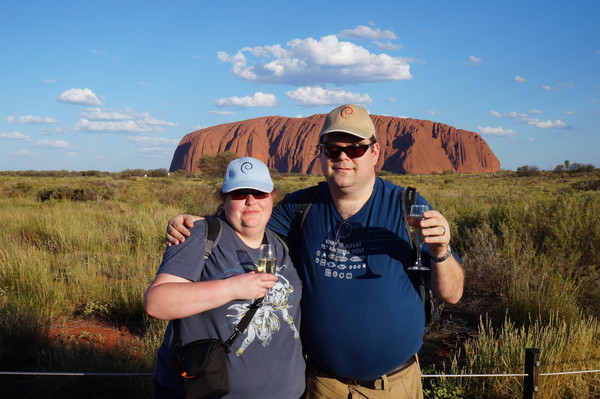
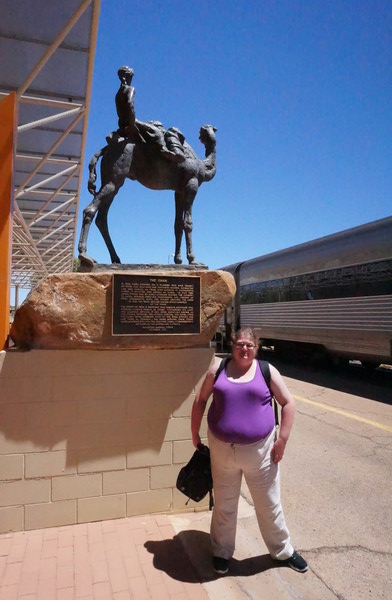
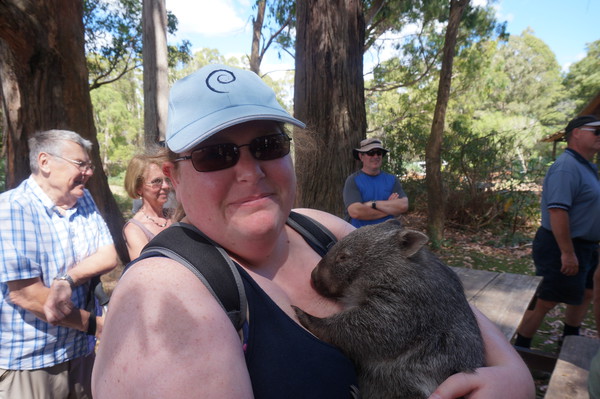

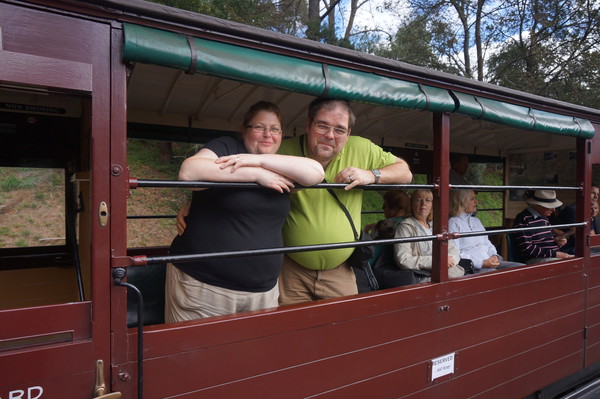
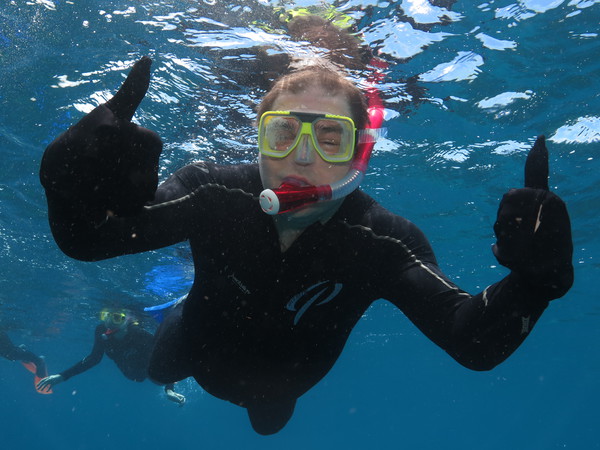
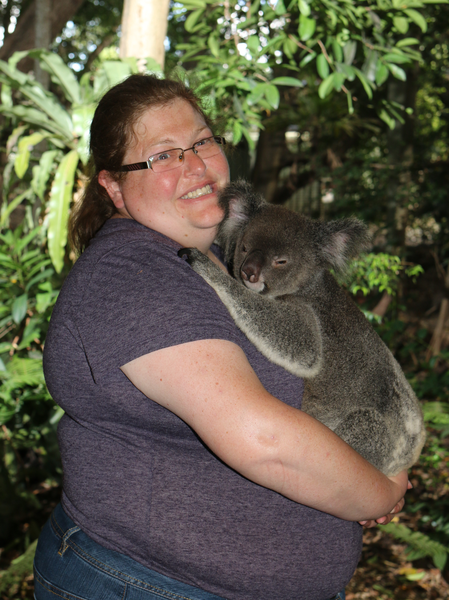
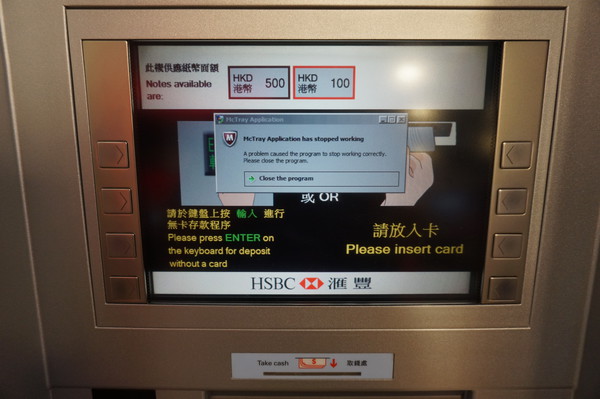
 About a year and a half after I started writing the openstack-debian-images package, I m very happy to announce to everyone that, thanks to Steve McIntyre s help, the official OpenStack Debian image is now generated at the same time as the official Debian CD ISO images. If you are a cloud user, if you use OpenStack on a private cloud, or if you are a public cloud operator, then you may want to download the weekly build of the OpenStack image from here:
About a year and a half after I started writing the openstack-debian-images package, I m very happy to announce to everyone that, thanks to Steve McIntyre s help, the official OpenStack Debian image is now generated at the same time as the official Debian CD ISO images. If you are a cloud user, if you use OpenStack on a private cloud, or if you are a public cloud operator, then you may want to download the weekly build of the OpenStack image from here:
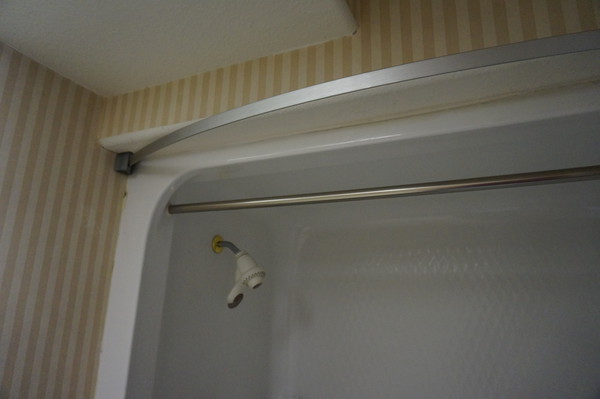 I guess I'm not the only one who's been annoyed by shower curtains
sticking to me in the shower, but I'd not really paid much thought to
it until now. Suddenly, as of maybe 18 months ago I'm seeing most
hotel bathrooms replacing the straight curtain track with a curved
one, to stop that happening. This photo shows that process with both
tracks visible...
Waterproof/washable TV remotes
I guess I'm not the only one who's been annoyed by shower curtains
sticking to me in the shower, but I'd not really paid much thought to
it until now. Suddenly, as of maybe 18 months ago I'm seeing most
hotel bathrooms replacing the straight curtain track with a curved
one, to stop that happening. This photo shows that process with both
tracks visible...
Waterproof/washable TV remotes
 This one really surprised me. As Jo will attest, I
have a little bit of an obsession with TVs and set-top boxes in hotel
rooms. This dates from my time working for Amino where we made set-top
boxes, and I got into the habit of checking what products were in the
hotels I stayed in. I've seen a range of weird and wonderful setups
over the years, but never this one before. In two of the hotels on our
trip, they had replaced the normal TV remotes with washable/wipe-down
ones. Weird...
This one really surprised me. As Jo will attest, I
have a little bit of an obsession with TVs and set-top boxes in hotel
rooms. This dates from my time working for Amino where we made set-top
boxes, and I got into the habit of checking what products were in the
hotels I stayed in. I've seen a range of weird and wonderful setups
over the years, but never this one before. In two of the hotels on our
trip, they had replaced the normal TV remotes with washable/wipe-down
ones. Weird...
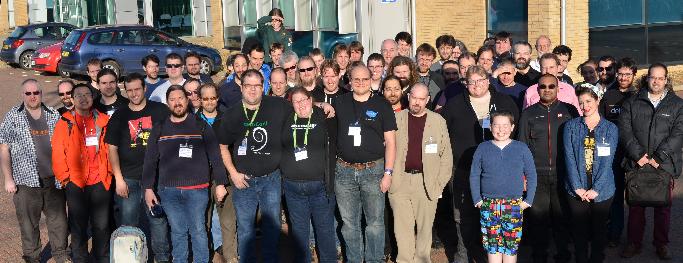
 There s a lot of discussion / moaning /arguing at this time, so I thought I d post something about how LAVA got into Debian Jessie, the work involved and the lessons I ve learnt. Hopefully, it will help someone avoid the disappointment of having their package missing the migration into a future stable release. This was going to be a talk at the Minidebconf-uk in Cambridge but I decided to put this out as a permanent blog entry in the hope that it will be a useful reference for the future, not just Jessie.
Context
LAVA relies on a number of dependencies which were at the time all this started NEW to Debian as well as many others already in Debian. I d been running LAVA using packages on my own system for a few months before the packages were ready for use on the main servers (I never actually installed LAVA using the old virtualenv method on my own systems, except in a VM). I did do quite a lot of this on my own but I also had a team supporting the effort and valuing the benefits of moving to a packaged system.
At the time, LAVA was based on Ubuntu (12.04 LTS Precise Pangolin) and a new Ubuntu LTS was close (Trusty Tahr 14.04) but I started work on this in 2013. By the time my packages were ready for general usage, it was winter 2013 and much too close to get anything into Ubuntu in time for Trusty. So I started a local repo using space provided by Linaro. At the same time, I started uploading the dependencies to Debian. json-schema-validator, django-testscenarios and others arrived in April and May 2014. (Trusty was released in April). LAVA arrived in NEW in May, being accepted into unstable at the end of June. LAVA arrived in testing for the first time in July 2014.
Upstream development continued apace and a regular monthly upload, with some hotfixes in between, continued until close to the freeze.
At this point, note that although upstream is a medium sized team, the Debian packaging also has a team but all the uploads were made by me. I planned ahead. I knew that I would be going to Macau for Linaro Connect in February a critical stage in the finalisation of the packages and the migration of existing instances from the old methods. I knew that I would be on vacation from August through to the end of September 2014 including at least two weeks with absolutely no connectivity of any kind.
Right at this time, Django1.7 arrived in experimental with the intent to go into unstable and hence into Jessie. This was a headache for me, I initially sought to delay the migration until after Jessie. However, we discussed it upstream, allocated time within the busy schedule and also sought help from within Debian with the RFH tag. Rapha l Hertzog contributed patches for django1.7 support and we worked on those patches upstream, once I was back from vacation. (The final week of my vacation was a work conference, so we had everyone together at one hacking table.)
Still there was more to do, the django1.7 patches allowed the unit tests to complete but broke other parts of the lava-server package and needed subsequent tweaks and fixes.
Even with all this, the auto-removal from testing for packages affected by RC bugs in their dependencies became very important to monitor (it still is). It would be useful if some packages had less complex dependency chains (I m looking at you, uwsgi) as the auto-removal also covers build-depends. This led to some more headaches with libmatheval. I m not good with functional programming languages, I did have some exposure to Scheme when working on Gnucash upstream but it wasn t pleasant. The thought of fixing a scheme problem in the test suite of libmatheval was daunting. Again though, asking for help, I found people in the upstream team who wanted to refresh their use of scheme and were able to help out. The fix migrated into testing in October.
Just for added complications, lava-server gained a few RC bugs of it s own during that time too fixed upstream but awkward nonetheless.
Achievement unlocked
So that s how a complex package like lava-server gets into stable. With a lot of help. The main problem with top-level packages like this is the sheer weight of the dependency chain. Something seemingly unrelated (like libmatheval) can seriously derail the migrations. The package doesn t use the matheval support provided by uwsgi. The bug in matheval wasn t in the parts of matheval used by uwsgi. It wasn t in a language I am at all comfortable in fixing but it s my name on the changelog of the NMU. That happened because I asked for help. OK, when django1.7 was scheduled to arrive in Debian unstable and I knew that lava was not ready, I reacted out of fear and anxiety. However, I sought help, help was provided and that help was enough to get upstream to a point where the side-effects of the required changes could be fixed.
Maintaining a top-level package in Debian is becoming more like maintaining a core package in Debian and that is a good thing. When your package has a lot of dependencies, those dependencies become part of the maintenance workload of your package. It doesn t matter if those are install time dependencies, build dependencies or reverse dependencies. It doesn t actually matter if the issues in those packages are in languages you would personally wish to be expunged from the archive. It becomes your problem but not yours alone.
Debian has a lot of flames right now and Enrico encouraged us to look at what else is actually happening in Debian besides those arguments. Well, on top of all this with lava, I also did what I could to help the arm64 port along and I m very happy that this has been accepted into Jessie as an official release architecture. That s a much bigger story than LAVA yet LAVA was and remains instrumental in how arm64 gained the support in the kernel and various upstreams which allowed patches to be accepted and fixes to be incorporated into Debian packages.
So a roll call of helpers who may otherwise not have been recognised via changelogs, in no particular order:
There s a lot of discussion / moaning /arguing at this time, so I thought I d post something about how LAVA got into Debian Jessie, the work involved and the lessons I ve learnt. Hopefully, it will help someone avoid the disappointment of having their package missing the migration into a future stable release. This was going to be a talk at the Minidebconf-uk in Cambridge but I decided to put this out as a permanent blog entry in the hope that it will be a useful reference for the future, not just Jessie.
Context
LAVA relies on a number of dependencies which were at the time all this started NEW to Debian as well as many others already in Debian. I d been running LAVA using packages on my own system for a few months before the packages were ready for use on the main servers (I never actually installed LAVA using the old virtualenv method on my own systems, except in a VM). I did do quite a lot of this on my own but I also had a team supporting the effort and valuing the benefits of moving to a packaged system.
At the time, LAVA was based on Ubuntu (12.04 LTS Precise Pangolin) and a new Ubuntu LTS was close (Trusty Tahr 14.04) but I started work on this in 2013. By the time my packages were ready for general usage, it was winter 2013 and much too close to get anything into Ubuntu in time for Trusty. So I started a local repo using space provided by Linaro. At the same time, I started uploading the dependencies to Debian. json-schema-validator, django-testscenarios and others arrived in April and May 2014. (Trusty was released in April). LAVA arrived in NEW in May, being accepted into unstable at the end of June. LAVA arrived in testing for the first time in July 2014.
Upstream development continued apace and a regular monthly upload, with some hotfixes in between, continued until close to the freeze.
At this point, note that although upstream is a medium sized team, the Debian packaging also has a team but all the uploads were made by me. I planned ahead. I knew that I would be going to Macau for Linaro Connect in February a critical stage in the finalisation of the packages and the migration of existing instances from the old methods. I knew that I would be on vacation from August through to the end of September 2014 including at least two weeks with absolutely no connectivity of any kind.
Right at this time, Django1.7 arrived in experimental with the intent to go into unstable and hence into Jessie. This was a headache for me, I initially sought to delay the migration until after Jessie. However, we discussed it upstream, allocated time within the busy schedule and also sought help from within Debian with the RFH tag. Rapha l Hertzog contributed patches for django1.7 support and we worked on those patches upstream, once I was back from vacation. (The final week of my vacation was a work conference, so we had everyone together at one hacking table.)
Still there was more to do, the django1.7 patches allowed the unit tests to complete but broke other parts of the lava-server package and needed subsequent tweaks and fixes.
Even with all this, the auto-removal from testing for packages affected by RC bugs in their dependencies became very important to monitor (it still is). It would be useful if some packages had less complex dependency chains (I m looking at you, uwsgi) as the auto-removal also covers build-depends. This led to some more headaches with libmatheval. I m not good with functional programming languages, I did have some exposure to Scheme when working on Gnucash upstream but it wasn t pleasant. The thought of fixing a scheme problem in the test suite of libmatheval was daunting. Again though, asking for help, I found people in the upstream team who wanted to refresh their use of scheme and were able to help out. The fix migrated into testing in October.
Just for added complications, lava-server gained a few RC bugs of it s own during that time too fixed upstream but awkward nonetheless.
Achievement unlocked
So that s how a complex package like lava-server gets into stable. With a lot of help. The main problem with top-level packages like this is the sheer weight of the dependency chain. Something seemingly unrelated (like libmatheval) can seriously derail the migrations. The package doesn t use the matheval support provided by uwsgi. The bug in matheval wasn t in the parts of matheval used by uwsgi. It wasn t in a language I am at all comfortable in fixing but it s my name on the changelog of the NMU. That happened because I asked for help. OK, when django1.7 was scheduled to arrive in Debian unstable and I knew that lava was not ready, I reacted out of fear and anxiety. However, I sought help, help was provided and that help was enough to get upstream to a point where the side-effects of the required changes could be fixed.
Maintaining a top-level package in Debian is becoming more like maintaining a core package in Debian and that is a good thing. When your package has a lot of dependencies, those dependencies become part of the maintenance workload of your package. It doesn t matter if those are install time dependencies, build dependencies or reverse dependencies. It doesn t actually matter if the issues in those packages are in languages you would personally wish to be expunged from the archive. It becomes your problem but not yours alone.
Debian has a lot of flames right now and Enrico encouraged us to look at what else is actually happening in Debian besides those arguments. Well, on top of all this with lava, I also did what I could to help the arm64 port along and I m very happy that this has been accepted into Jessie as an official release architecture. That s a much bigger story than LAVA yet LAVA was and remains instrumental in how arm64 gained the support in the kernel and various upstreams which allowed patches to be accepted and fixes to be incorporated into Debian packages.
So a roll call of helpers who may otherwise not have been recognised via changelogs, in no particular order:




